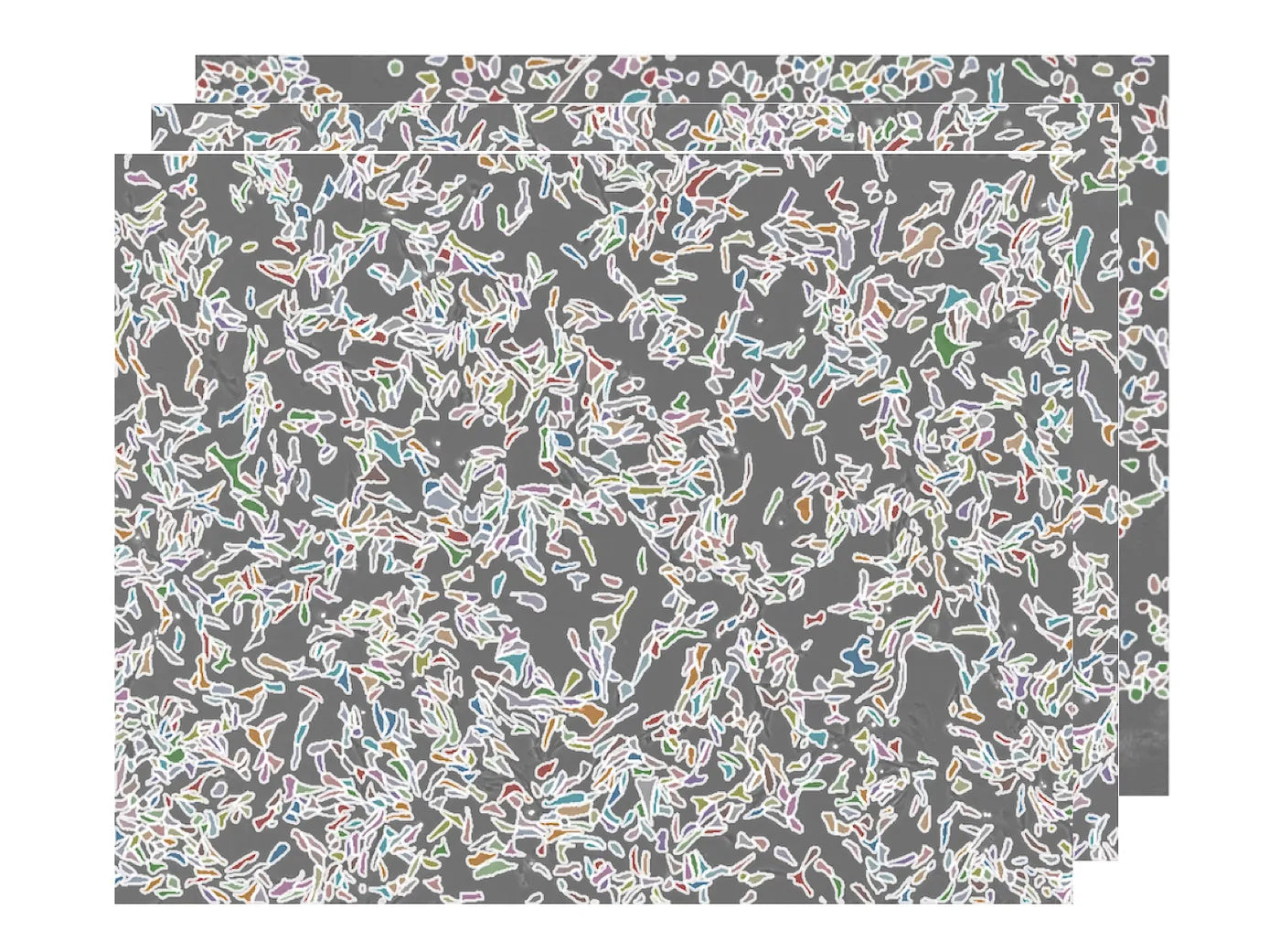How did HiDef® B8 come to be, and why?
HiDef® B8 is a cell culture medium based on the formulation of B8 first described in “Negligible-Cost and Weekend-Free Chemically Defined Human iPSC Cell Culture” (Kuo et al., 2019), from the Burridge lab at Northwestern University.
The goal of this study was to create a cell culture medium that is:
- cost effective
- entirely defined
- weekend-free (no medium changes over the weekend)
- animal-free
Existing medium formulations on the market have several limitations. Many are chemically undefined, meaning that not every chemical component is accounted for. Commonly used undefined ingredients such as serum are prone to variation between batches. Additionally, many formulations are not fully disclosed by the manufacturer, containing proprietary componentry. These issues limit media use due to product uncertainty and variability, potentially introducing experimental unknowns. For further discussion of different types of cell culture media, please visit our other blog post: https://www.definedbioscience.com/blog/the-importance-of-cell-culture-ingredients.
Essential 8 (E8) is one defined medium on the market; however, it is expensive and has not been optimized past the initial formulation. It, like most stem cell maintenance formulations, uses Fibroblast Growth Factor 2 (FGF2). A major limitation of FGF2 is that it is not stable at cell culture temperatures and quickly loses potency. This loss of effectiveness is a major factor in the need for daily media changes.
The process of bringing HiDef® B8 to market comes in two parts: optimizing the existing E8 formula and proving increased effectiveness both as a pluripotency medium and a weekend-free formula.
Part 1: Making the Formula (Kuo et al., 2020)
In this study, researchers started with the existing E8 formula and performed several short-term assays to identify essential componentry and efficacy across concentration ranges (see table below). iPS cells were enzymatically dissociated via single-cell suspension, counted and plated at lower-than-normal density to facilitate the discovery of factors only detectable under more extreme conditions; and, therefore provide data on the robustness to the formulations.

The results were as follows:
Essential: Insulin, Selenium in the form of Sodium Selenite, FGF2, TGF-β
Non-Essential, but Enhanced Growth: L-ascorbic acid 2-phosphate, Transferrin, Sodium Bicarbonate
Non-Essential: IGF1, Non-essential amino acids (NEAA), Lipids, Albumin
In addition to determining which ingredients were necessary and promoted enhanced growth, the short-term assays also revealed ideal concentrations of each ingredient. This is also where FGF2 was replaced in the formulation to increase overall stability. The authors screened several mutant forms of human FGF1 and FGF2, and found that FGF2-G3 performed well. Previously developed at Masaryk University using iterative in silico and empirical testing (Dvorak et al., 2018), FGF2-G3 possesses nine point mutations compared to the native form that increase potency and thermostability in mammalian cell culture conditions.
With the preliminary data collected, the team moved next to long-term assays to further test their new formulation. At this point TGF-β1 was the most expensive component in the formula. The short-term assays had shown that the amount of TGF-β1 could be greatly reduced; this did not remain the case following analysis of the long-term assays. The authors identified an isoform of TGF-β1, called TGF-β3, that can be functionally produced in E. coli as opposed to mammalian cells. While this isoform exhibits lower potency, its highly-reduced production costs made for a more compelling component in this formulation.
Following these studies, the new formulation, termed B8, was finalized:

Part 2: Analysis of B8 for pluripotency maintenance and use in weekend-free culture (Kuo et al., 2020)
To evaluate B8 for weekend-free use, the authors first cultured hiPSC cell line 19c3 in B8 for over 100 passages and 27 new human donor-derived iPSC cell lines for over 50 passages. They tracked the differentiation status of these cell lines by flow cytometry to characterize levels of SSEA4 & TRA-1-60 expression. These markers are expressed in pluripotent or undifferentiated cells. Even after long-term culture in B8, all cell lines were shown to maintain pluripotency by expressing these markers at appropriate levels and genomic stability was demonstrated via G-banding karyotype analysis.
The authors additionally assessed two weekly feeding schedules to analyze the weekend-free capacity of B8:


Each schedule included a 1:20 split every 3.5 days with B8 medium supplemented with thiazovivin. The “weekend-free” schedule has an extra B8 feeding without thiazovivin following each split while the “weekend-free no media change” schedule has no extra medium changes. Of the two feeding schedules proposed, “weekend-free” proved most effective.
Final tests conducted on B8 with the weekend-free feeding schedule were for differentiation. The authors compared the differentiation of hiPSCs into cardiac, endothelial, and epithelial lineages with existing differentiation protocols. These tests demonstrated B8 medium’s ability to support downstream differentiation under the weekend-free schedule.
In this study, the authors showed how B8 accomplished the primary goals of the study:
- Cost effectiveness: the inclusion of FGF2-G3 and TGF-β3 in this formulation as well as the optimization of the formula overall brings the cost of B8 down as compared to the original E8 formula and others on the market
- Full definition: all ingredients of the B8 formula are defined and the formula is not proprietary
- Weekend-free: the inclusion of the thermostable FGF2-G3 facilitates extended medium exchange schedules at appropriate seeding densities
- Animal-free: no animal-derived proteins, such as albumins, are required and non-animal cell vectors were used to produce necessary included growth factors
References:
Kuo, H.H., et al., Negligible-Cost and Weekend-Free Chemically Defined Human iPSC Culture. Stem Cell Reports, 2020. 14(2): p. 256-270.
Dvorak, P., et al., Computer-assisted engineering of hyperstable fibroblast growth factor 2. Biotechnol Bioeng, 2018. 115(4): p. 850-862.


